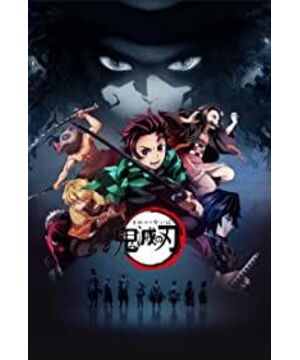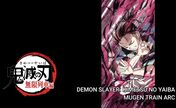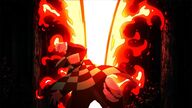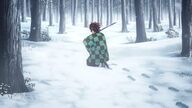Doi Kenro discusses a so-called "psychology of dependence" in "The Psychological Structure of the Japanese".
Regarding the relationship between the individual and the group, he pointed out that under this psychological dependence, the true self is not independent from the group, but is precisely in the group and in a dependent relationship. (He gave an example of himself, when he was leaving the hospital due to some responsibilities - he said it was to let the hospital get rid of its dependence on him (laughs) - his colleague said to him why did you lose What about your own personality? That is, "The translation here may be considered, but I don't understand Japanese anyway")
Every time Tanjiro and Nezuko are in crisis, they think of their family. Nezuko's suggestion (old psychoanalysis) is that she can't attack human beings, and considers human beings as her own family. This is a group. Extended generalization. This dependence on family/group becomes an active love drive. Each growth of the characters in the play is accomplished when a dependency is recognized.
With the "dependency relationship" comes the responsibility of the position in which the relationship is located. When Tanjiro endured severe pain in the revolving room and fought with the writer ghost, he kept his will by constantly reminding himself that he was the "eldest son". And when my wife Shanyi recalled the grandfather's encouragement and admonition to him, he was the image of an obvious dependant.
This kind of dependence comes from a distinction between "others", if they are not in the same group, then they are "others" (Kenro Doi also listed a lot of Japanese words about others).
When it comes to "others", it must be extended to the other side of this "dependency mentality" and Japan's "culture of shame".
Compared with the Christian guilt culture, in the "shame culture", the purpose of "apology" is to gain the understanding and forgiveness of others, which is an act of begging for approval. The Japanese "Smimarsai" also includes an apology for what did not happen. In "Blade of Ghost Slayer", the ghosts as negative images are the representatives of this aspect of "dependency psychology".
The writer ghost mentioned above, the reason for his blackening is that he was completely denied by others, and in the end he asked Tanjiro about his own evaluation, "Is my blood ghost art really powerful? ”, salvation is only achieved when the approval of others is obtained.
In the bullet screen at station B, every time I brush "the ghosts who have been killed say yes". Behind the seemingly joking words is the hidden psychology hidden in "Blade of Ghost Slayer". It was Tanjiro who affirmed the humanity they once had behind the brutality, and their sorrow and tears. Most people will be moved by this (although there is no shortage of rational people reminding everyone how many people he has just killed), and here is the "apology" to the readers/viewers. For example, when Tanjiro killed the "spider ghost mother" in Natian Spider Mountain - the picture here is heartbreakingly beautiful, and she gave up the struggle at the end and felt relieved. Tanjiro felt this mood at the end, and changed his moves. With Tanjiro's explanation, "It is a kind of fear and sadness that is deepened by death." At that moment, the audience seemed to agree with this beautiful picture. she,.
"Shame is the unspeakable memory of the loss of one's nature, expressing this sadness, expressing the hope of regaining one's true self but helpless... Shame touches human nature more than self-blame." - Bonhoeffer
——
(I haven't finished writing yet, the computer will be out of power)
View more about Demon Slayer: Kimetsu no Yaiba reviews









